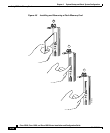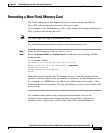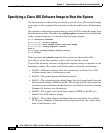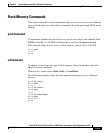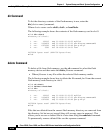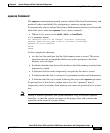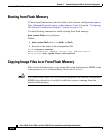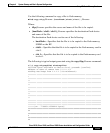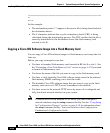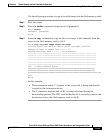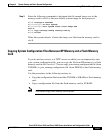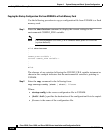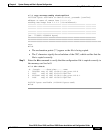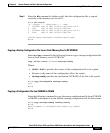
Chapter 4 System Startup and Basic System Configuration
Using RP Flash Memory Cards
4-54
Cisco 12010, Cisco 12410, and Cisco 12810 Router Installation and Configuration Guide
OL-11496-01
CCCCCCCCCCCCCCCCCCCCCCCCCCCCCCCCCCCCCCCCCCCCCCCCCCCCCCCCCCCCCCCCCCCCCC
CC
Milo#
In this example:
• The exclamation points (!!!) appear as the source file is being downloaded to
the destination device.
• The C characters indicate that a cyclic redundancy check (CRC) is being
calculated during the downloading process. The CRC verifies that the file is
correctly downloaded to the destination device (the flash memory card
inserted in slot 0).
Copying a Cisco IOS Software Image into a Flash Memory Card
You can copy a Cisco IOS software image to a flash memory card at any time for
later use.
Before you copy an image be sure that:
• You have a formatted flash memory card inserted in RP slot 0 or slot 1. See
the “Formatting a New Flash Memory Card” section on page 4-47 if you need
to format a flash memory card.
• You know the name of the file you want to copy to the flash memory card.
• You have a valid, bootable Cisco IOS software image stored in the onboard
flash memory SIMM, enabling you to start the router.
• The bootable Cisco IOS software image that you want to copy to the flash
memory card exists on a TFTP server somewhere in the network.
• You have access to the network TFTP server by means of a configured and
fully functional network interface on your system.
Note To ensure access to the network TFTP server, you must configure a
network interface using the setup command facility. See the “Using Setup
for Configuration Changes” section on page 4-18 for information about
the setup command facility. You can also refer to the Configuration
Fundamentals Configuration Guide.



